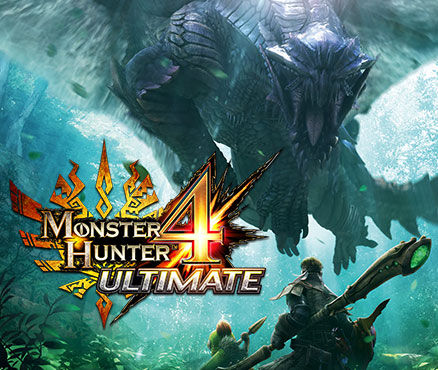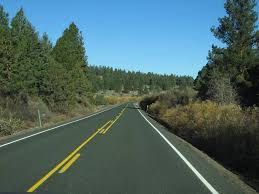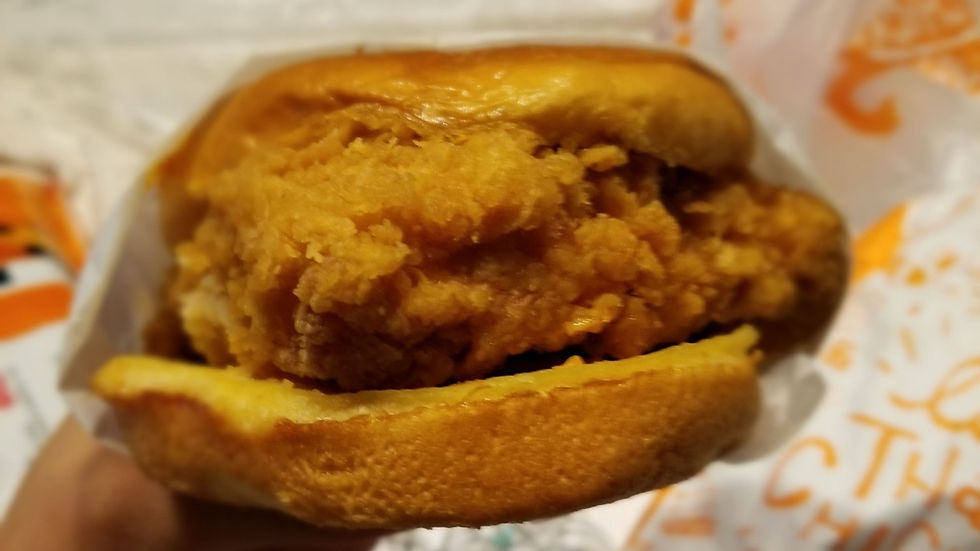Review: Monster Hunter 4 Ultimate
- Gavin Sharp

- Feb 3, 2021
- 7 min read

What do you think makes the perfect video game? An in-depth and amazing story? Perhaps fast-paced, heart-pumping gameplay? Maybe amazing, cleverly-crafted worlds to explore and understand? While those are factors that help contribute to an amazing game, there’s one factor that I believe is the best: boss fights. And in the Monster Hunter series, my wishes are fulfilled. Monster Hunter is a video game series all about boss fights. Every new monster encountered is a challenge to overcome, a masterfully crafted boss fight one after another. And in Monster Hunter 4 Ultimate, the series couldn’t be any better.
A Brief History of the Monster Hunter Series
The Monster Hunter series has been running since 2004 with its original (and aptly-named) debut, Monster Hunter. It was released on March 11, 2004, on the PlayStation 2 with less-than-raving reviews. However, the premise of the Monster Hunter series had been born in this game: an almost endless loop of gathering items, crafting weapons, slaying monsters, and repeating the cycle.
For a short while, the series was stagnant over in the U.S., with next to nothing major happening. It wasn’t until 2007 when Monster Hunter came back with Monster Hunter Freedom Unite when American hype started building up. This is the game that earned the Monster Hunter series its “cult” status. Many veteran fans cite this as the first Monster Hunter game they played; including myself. Freedom Unite, as a game, was looked upon fondly by all, but it was not without its flaws, as it was exclusive to the PlayStation Portable.
The next game to release was Monster Hunter Tri in 2010, made specifically for the Wii. The PlayStation 3 was proving to be too hard to develop at the time, so the Monster Hunter team packed it all up and moved it over to the Nintendo Wii. Monster Hunter Tri was not a bad game, but it definitely had its fair share of issues.
An updated version of Tri called Monster Hunter 3 Ultimate was released for both the brand new Wii U and 3DS. Monster Hunter 3 Ultimate became popular in the U.S., and it began to garner an even wider audience. At this point, people were anxious for something amazing to come out of the Monster Hunter series.
Due to that, Nintendo signed an exclusivity deal with Capcom in order to get rights to Monster Hunter on the 3DS. Launching alongside the newer “New Nintendo 3DS” in the U.S. was Monster Hunter 4 Ultimate. Monster Hunter 4 Ultimate, or MH4U, is nothing short of an amazing video game.
New Changes
With that history out of the way, let’s talk about MH4U. The new focus of MH4U was better environments to enhance gameplay. One example is the ability to climb certain walls. Amazing, right? These climbable walls allowed for a feeling of depth, seen in other Monster Hunter remakes, like Monster Hunter 3 Ultimate.
The game also introduced another new and ridiculously fun mechanic: mounting. Attack a monster enough times in the air, and you’ll be able to mount it in what is essentially the Monster Hunter equivalent of bull-riding. From that point on, you can either bring it down by button mashing so much that Mario Party would be proud, or you get knocked off. This new mechanic couldn’t be more useful (and more fun).
In addition to new mechanics, MH4U re-tuned other mechanics, specifically the weapons. All twelve weapons from other Monster Hunter games were coming back, including popular ones like the longsword, switch axe, and the great sword, and they were all fine-tuned to be much more fun than in the other previous predecessors. However, they added two new weapons to the series in this game: the insect glaive and the charge blade. Both were mighty additions to the roster and positively received by all. There was one issue with these new weapons, though: they were slightly overpowered. Other than that, it couldn’t be more fun to be a hunter.
The Review
Monster Hunter has never been exactly known for groundbreaking stories, but MH4U does have a decent story. It’s quite simple. It starts with you, a brand new hunter, entering a port town in the middle of a desert called Val Halbar. It’s going well, until the ship you’re on encounters a gigantic monster swimming through the very sands you’re passing through. This monster encounter serves as a wonderful tutorial for basic controls such as walking, gathering, and controlling the camera. It also showcases how good and smooth the controls are now, despite the fact that it’s only running on a 3DS.
After this tutorial, the game drops you off at Val Halbar and you’re free to do whatever. You can continue the (okay) story, do optional tutorials, or go hunt with your friends. Speaking of hunting with friends, it’s never been easier. With the guild hall, you can meet up with friends easily, due to the simplicity of Nintendo’s multiplayer functionality.
Despite being made with multiplayer in mind, MH4U is perfectly balanced as a single-person experience. This freedom to learn the game by just diving in headfirst is what’s so magical about this game. Of course, you craft better weapons and better armor to become stronger, but the real strength you gain is in your own ability to control your weapon with poise and finesse. You truly feel powerful slaying a monster with the weapon you’ve stuck with throughout the course of the game.
On that note, the monsters are absolutely spectacular. The design of each monster is breathtaking. Additionally, the progression and build-up to each monster helps the player appreciate each monster. Let’s say you decide to complete the basic tutorials. After learning how to craft potions and make well-done steaks out in the field, you're tasked with slaying a type of monster called the Jaggi and Jaggia. After slaying them, you are assigned another quest, your first big monster hunt: to slay a Great Jaggi. The head honcho of the Jaggis is the first of many bosses to come, and perhaps a wonderful way to learn how to play the game. The Great Jaggi isn’t too hard- but he’s not a pushover either. He has a pretty basic moveset, but it’s nimble enough to give a beginner some trouble. This teaches the player how to read a monster’s movements and how to dodge an incoming attack. Even if the hunt does seem slow to you, this progression helps you understand the game, preparing you for the harder hunts ahead.
The hunt also helps introduce the mounting mechanic for the first time. Before the fight, a cutscene plays, showcasing the monster in his habitat. Before you know it, you’re thrust into the hunt right on the back of the monster. Before you’re even able to take your first swing at Great Jaggi, you’re put on its back to learn one of the most fundamental techniques of hunting in this new game. It’s a pretty solid way to introduce the mechanic.
Using any of the weapons in this game is so fluid. Even though it’s on the 3DS, a pretty clunky device, it is genuinely amazing to me how they can give the weapons such a realistic feeling. The great sword, for example, plays just like you would expect a ridiculously large sword to. It’s heavy, and you move slower, but those swings hit with genuine impact. When I fought the Great Jaggi with it, I felt so incredibly strong, and yet it was still challenging to hunt. The Great Jaggi didn’t just lay around, casually getting hit. Before I knew it, it was already back on its feet, jumping and biting at me. Finally, I slayed the monster, finishing the quest.
After finishing the quest, what happens then? Great question, Hunter! You hunt more monsters, then some more, and then, after that, you hunt some more. Fulfilling a quest unlocks more quests, allowing you to hunt bigger, stronger, and harder monsters, allowing you to carve their materials to craft better weapons and armor. Eventually, you’ll even come face-to-face with monsters that are obscenely strong; such as the flagship monster, Gore Magala.
Gore Magala- or just Gore as some call it- is a monster that releases a deadly virus known as the Frenzy Virus. It turns existing monsters into extremely hostile creatures that threaten the lives of everyone. These frenzied monsters become endgame fights that are iconic. Some of these frenzied monsters are the strongest versions of them to exist within the Monster Hunter lore.
The lore of the series is a talking point of the games as well. A piece of lore that isn’t exactly stated but is easy to figure out on your own is that Great Jaggi is actually the alpha male of the packs of Jaggi and Jaggia in an area. Touches like these are what bring this world to life.
With that, let’s discuss our hunting grounds. The maps are all integral to how you play the game. They’re set up into designated areas that feel less like an environment and more like mini arenas with each area. There’s a transition between each one and they all look beautiful for 3DS standards.
In fact, I forgot to comment on that. This game looks quite stunning for the 3DS. The graphics of it all hold up even in 2020 on the verge of the PS5 and the Xbox Series X’s release. Funny to think how a little handheld can do that.
But anyway, there’s plenty of variety in all of the maps. They all feel like their own ecosystem when you stop to look at all the small creatures or simply observe the big monster roaming the environment.
Despite how I make it sound, Monster Hunter as a series sends a very deep environmental message. These monster hunters all live in a symbiotic relationship with the monsters. This is highlighted in the insect glaive. One of the aspects of the glaive is the Titular Insect, which is a living animal you use to hunt. You as a hunter and the insect work together to take down these monsters.
Speaking of monsters, the hunters only hunt them when they are a hazard to themselves. In the Monster Hunter world, there is no unsanctioned monster hunting. When you become a hunter, you swear an oath to protect the environment and life symbiotically with all forms of life. Even the monsters that are walking natural disasters are to be respected due to their absolute power. Only the greatest of hunters earn the right to hunt such monsters.
We live in a modern era where hunting has become a sport, rather than survival. When we hunt for sport, we undermine the overall importance of the nature we live with. Nature commands respect and that is what Monster Hunter 4 Ultimate wants you to realize through its amazing gameplay, subtle storytelling, and wonderful gameplay loop. If you have any means to play this game, I highly encourage it. This game is easily one of the greatest 3DS games of all time.




Comments